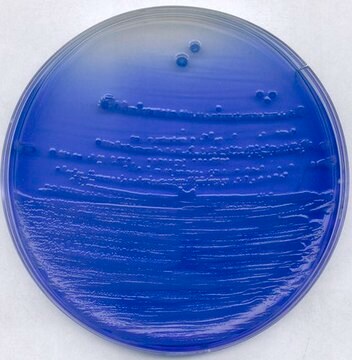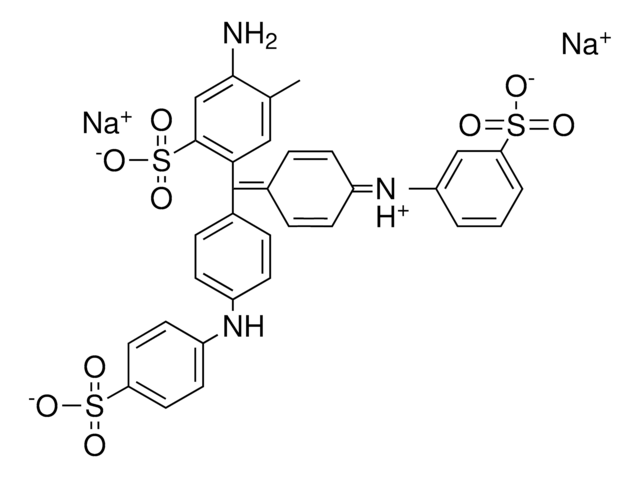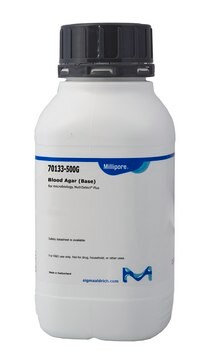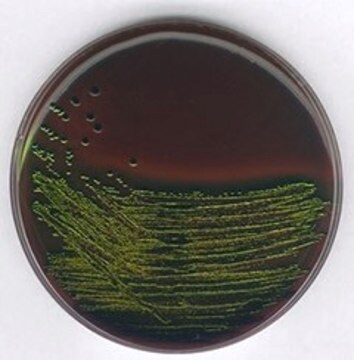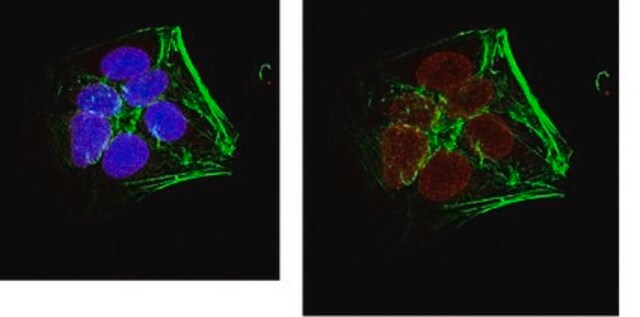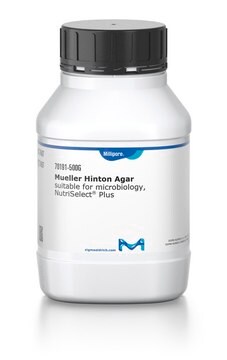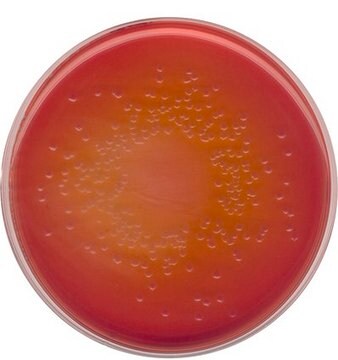22520
China Blue Lactose Agar
suitable for microbiology, NutriSelect® Basic
About This Item
Produtos recomendados
esterilidade
non-sterile
Nível de qualidade
linha de produto
BioChemika
Formulário
powder
prazo de validade
limited shelf life, expiry date on the label
composição
agar, 12 g/L
casein peptone, 5 g/L
china blue, 0.375 g/L
lactose, 10 g/L
meat extract, 3 g/L
sodium chloride, 5 g/L
fabricante/nome comercial
NutriSelect® Basic
técnica(s)
microbe id | utilization test: suitable
microbiological culture: suitable
pH final
7.0±0.2 (25 °C)
aplicação(ões)
bioburden testing
environmental
food and beverages
water monitoring
microbiology
adequação
nonselective and differential for Escherichia coli
nonselective and differential for Proteus spp.
nonselective and differential for Salmonella spp.
nonselective and differential for Staphylococcus spp.
nonselective and differential for coliforms
nonselective and differential for enterobacteriaceae
Descrição geral
Nota de preparo
Outras notas
Nota de rodapé
The designations basic, plus, or prime are added to indicate the quality control level, from basic quality control to standard QC plus to prime for full regulatory compliance.
Informações legais
Não está encontrando o produto certo?
Experimente o nosso Ferramenta de seleção de produtos.
Código de classe de armazenamento
11 - Combustible Solids
Classe de risco de água (WGK)
WGK 3
Ponto de fulgor (°F)
Not applicable
Ponto de fulgor (°C)
Not applicable
Equipamento de proteção individual
Eyeshields, Gloves, type N95 (US)
Escolha uma das versões mais recentes:
Certificados de análise (COA)
Não está vendo a versão correta?
Se precisar de uma versão específica, você pode procurar um certificado específico pelo número do lote ou da remessa.
Já possui este produto?
Encontre a documentação dos produtos que você adquiriu recentemente na biblioteca de documentos.
Artigos
Chromogenic media enable the selective detection of S. aureus, which produce bluish-green colonies that are clearly differentiated from other species.
Salmonella contamination is the second leading cause of food-borne illness worldwide. Controlling outbreaks of Salmonella is an important task for food regulators, restaurants and the food industry in general. The Salmonella family includes over 2,300 serotypes of bacteria, but two types, Salmonella enteritidis and Salmonella typhimurium, are responsible for about half of all human infections. Most outbreaks of Salmonella are traced back to dairy, poultry and meat products, but Salmonella can grow on nearly any food. Chicken, eggs and their derivative products are particularly high risk.
Nossa equipe de cientistas tem experiência em todas as áreas de pesquisa, incluindo Life Sciences, ciência de materiais, síntese química, cromatografia, química analítica e muitas outras.
Entre em contato com a assistência técnica